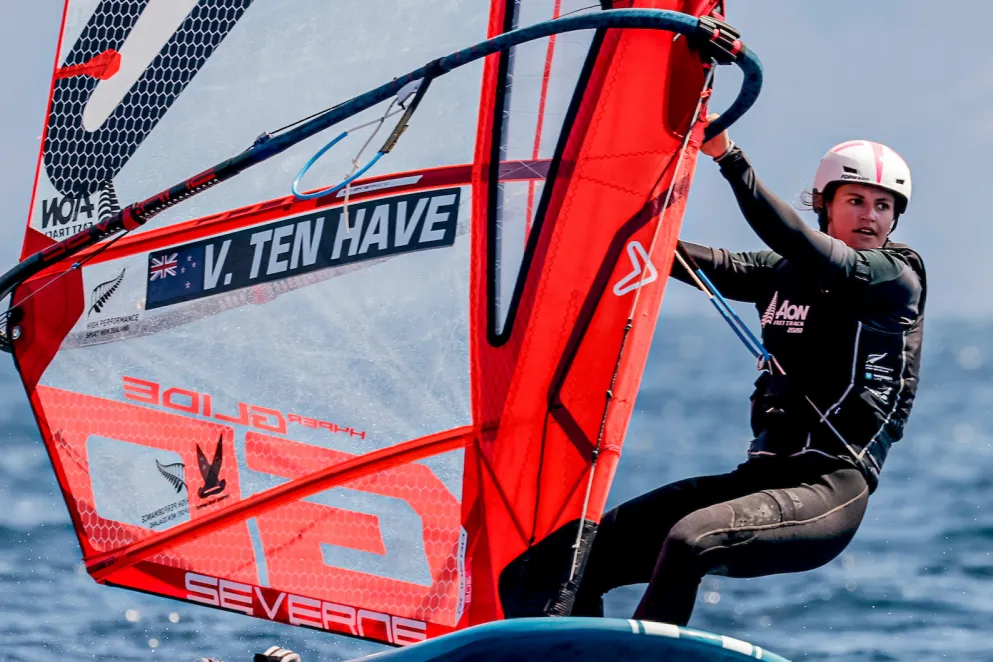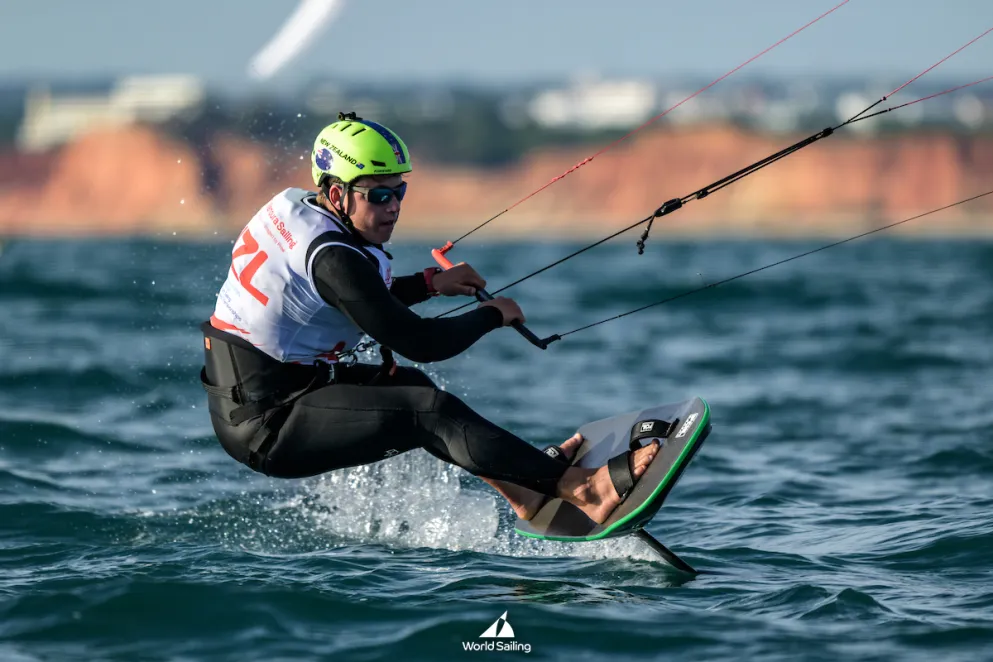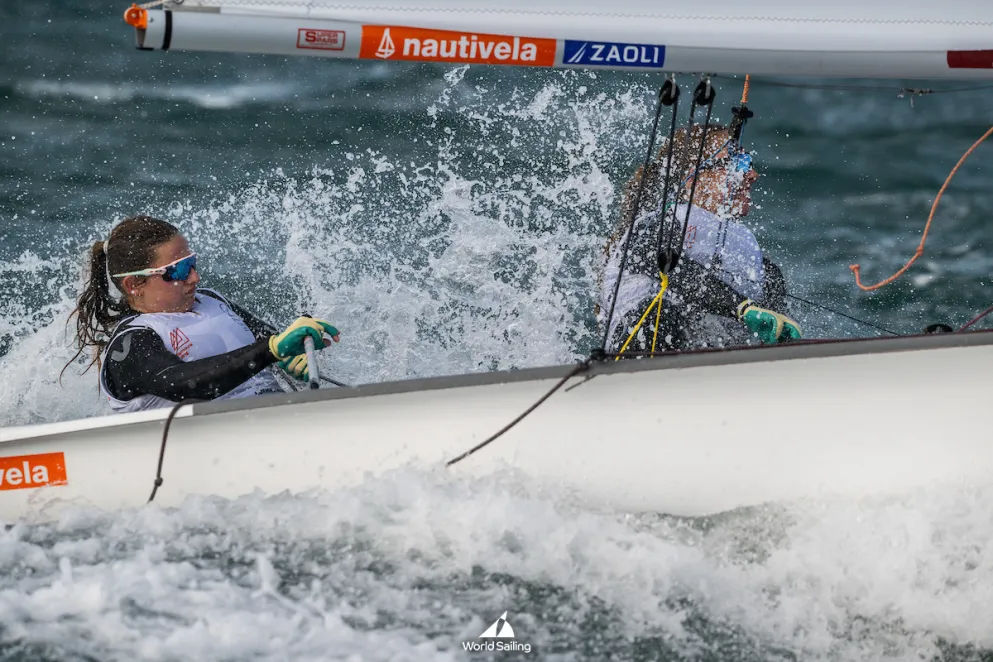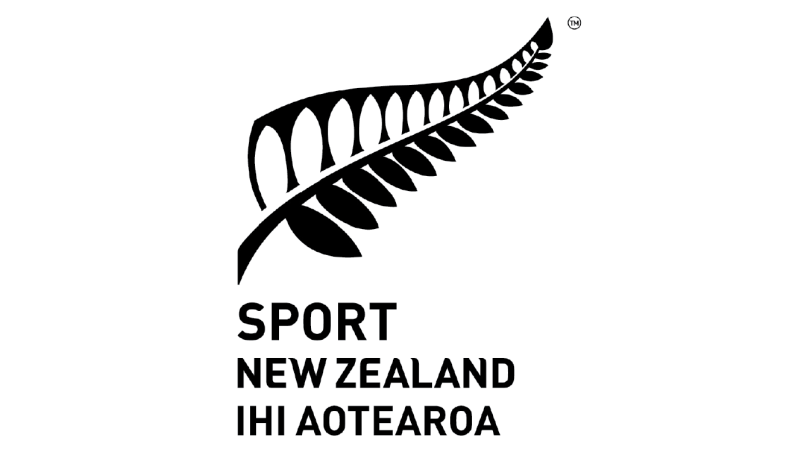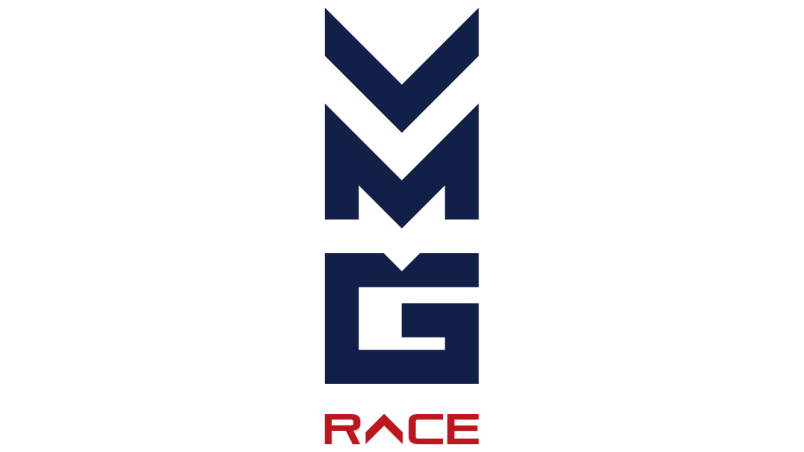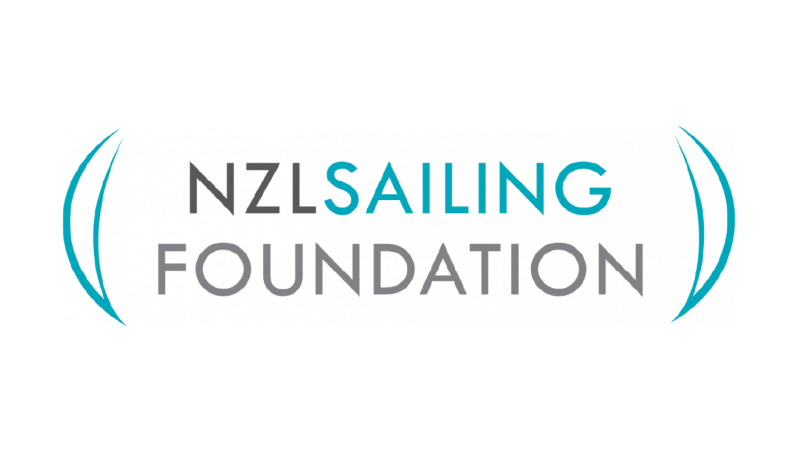Between Water and Sky - UNO features Veerle ten Have
Bay of Plenty's lifestyle magazine UNO profiled New Zealand wind foiling champion and the newest member to the NZL Sailing Team Veerle ten Have in their December edition. Words by Nicky Adams, photos by Graeme Murray + Sailing Energy.
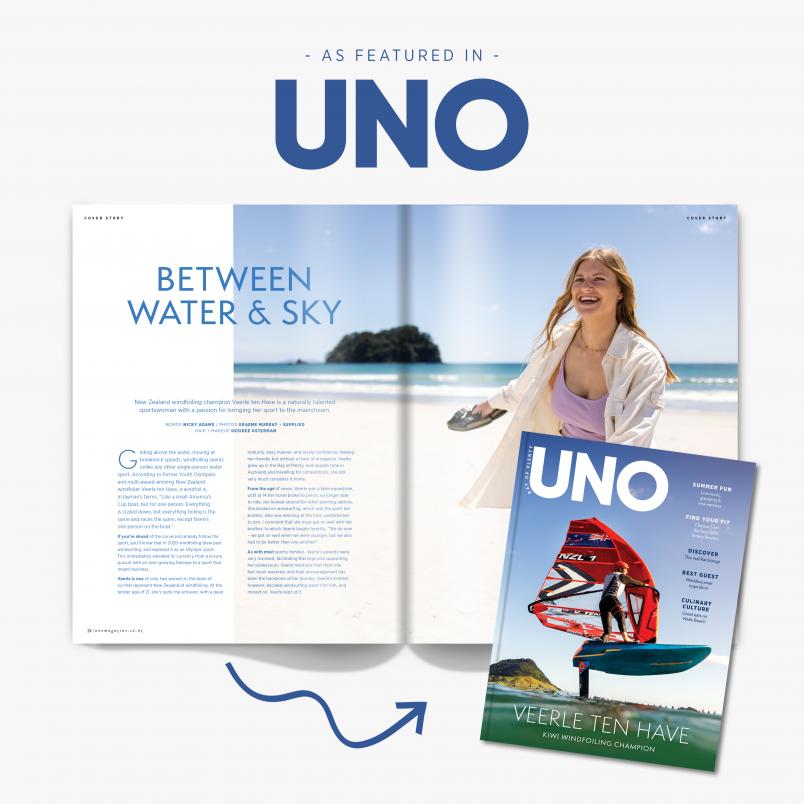
Gliding above the water, moving at breakneck speeds, windfoiling seems unlike any other single-person water sport. According to former Youth Olympian and multi-award-winning New Zealand windfoiler Veerle ten Have, a windfoil is, in layman’s terms, “Like a small America’s Cup boat, but for one person. Everything is scaled down, but everything foiling is the same and races the same, except there’s one person on the boat.”
If you’re ahead of the curve and already follow the sport, you’ll know that in 2020 windfoiling blew past windsurfing, and replaced it as an Olympic sport. This immediately elevated its currency from a leisure pursuit with an ever-growing fanbase to a sport that meant business.
Veerle is one of only two women in the team of six that represent New Zealand at windfoiling. At the tender age of 21, she’s quite the achiever, with a quiet maturity, easy manner, and lovely confidence, making her friendly but without a trace of arrogance. Veerle grew up in the Bay of Plenty, and despite time in Auckland and travelling for competitions, she still very much considers it home.
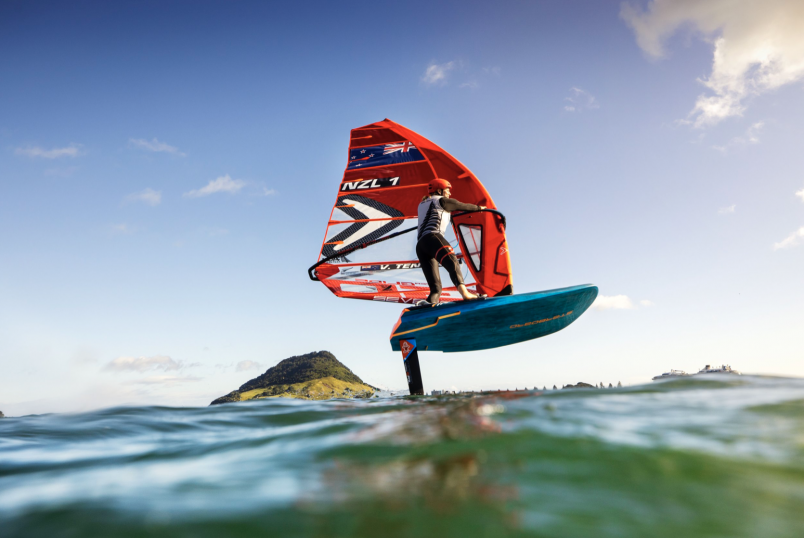
From the age of seven, Veerle was a keen equestrian, until at 14 her horse broke its pelvis; no longer able to ride, she looked around for other sporting options. She landed on windsurfing, which was the sport her brother, who was learning at the time, pestered her to join. I comment that she must get on well with her brother, to which Veerle laughs heartily. “We do now – we got on well when we were younger, but we also had to be better than one another!”
As with most sporty families, Veerle’s parents were very involved, facilitating trainings and supporting her endeavours. Veerle mentions that their role has never wavered, and their encouragement has been the backbone of her journey. Veerle’s brother, however, decided windsurfing wasn’t for him, and moved on. Veerle kept at it.
You must have loved it, I observe. “No, I absolutely hated it,” she chuckles. So why did she continue? “Well, I enjoyed it at the beginning, and then after a while I thought – this is stupid! It’s cold, it’s on the water, it’s wet, I go out after school when I’m tired and I just want to go home,” Veerle recalls. “So then I started not liking it, especially during the winter months. But I kept at it, because when I start something, I just have to keep going until I’m a bit better.”
By this point, just as the less appealing aspects of windsurfing began tipping the balance and the temptation to quit was almost too great to resist, an opportunity presented itself in the form of a trip to the Junior World Championships in Sardinia. “I love travelling, so I was pretty excited,” Veerle says. This trip proved a huge turning point for her. “After I’d done that, I thought, ooh, you can race these things, you can compete! And that’s what I love about the sport, the racing and competing, because I’m quite a competitive person.”
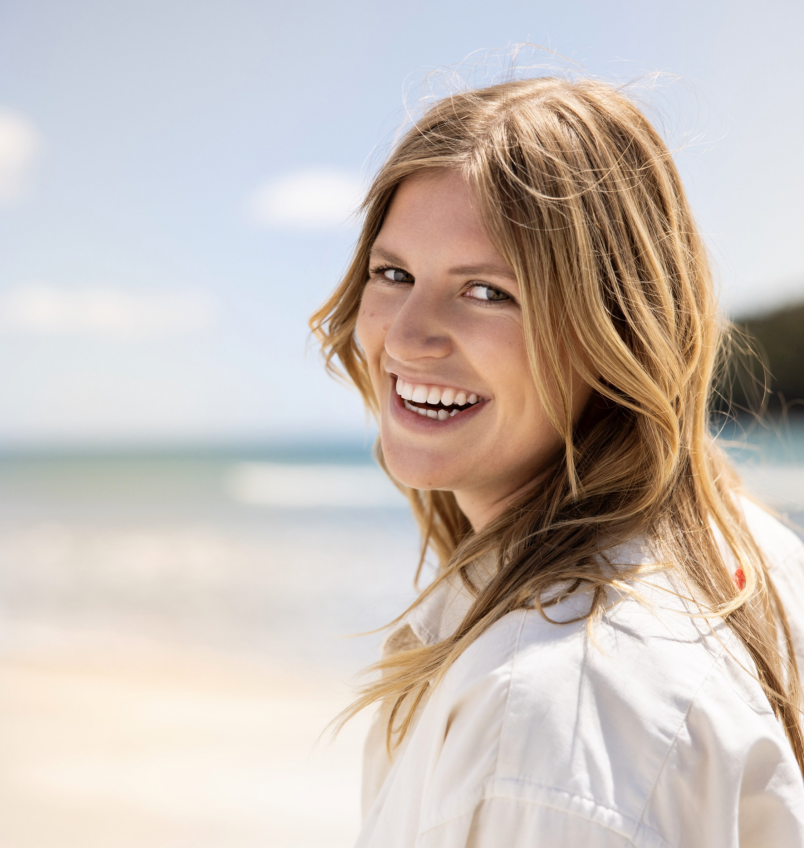
Sticking with windsurfing for the next six years, Veerle continued to achieve. Then, while she was training to try to get into the Tokyo Olympics, a curveball came her way when a decision completely out of her control altered her whole life path. “In 2020 when I was training in the Olympic class trying to get to Tokyo, they changed the Olympic class from windsurfing to windfoiling. So everyone in New Zealand and around the world was making the switch, and new people were coming into windfoiling. I wasn’t sure if I wanted to do it – I didn’t know whether to keep doing sport or go to uni or get a job.”
Despite Veerle’s reservations, the sailing powers-that-be identified that she would be a brilliant windfoiler. “They always pushing to get more girls in the water, but it wasn’t until I started foiling that we realised I was actually pretty decent at it – more so than windsurfing, because foiling was better suited to my body type in the way you had to be a bit heavier and stronger. With foiling it was more about that than about being aerobically fit.”
Windfoiling, it transpires, requires a very different type of strength and fitness. Unlike the more aerobic windsurfing, foiling needs a lot of explosive power. “I think it’s important to be super strong all around – legs, shoulders, arms,” Veerle explains. “With windsurfing it’s not so much legs – when you’re on a foil you’re trying to push the power up the foil with your legs, whereas on the surf you’re just on the water, which tends to be a lot more shoulders.”
It turns out Veerle is not so hot on the cardio side of sports training. “Some people really enjoy going for a run or a road cycle or hopping on the ski erg. That’s not me,” she says. “I just like lifting heavy weights in the gym. Nowadays I really enjoy mountain biking, and I go for the occasional run, but having to do that as my main training off the water is not very enjoyable. I’m just not a cardio athlete.”
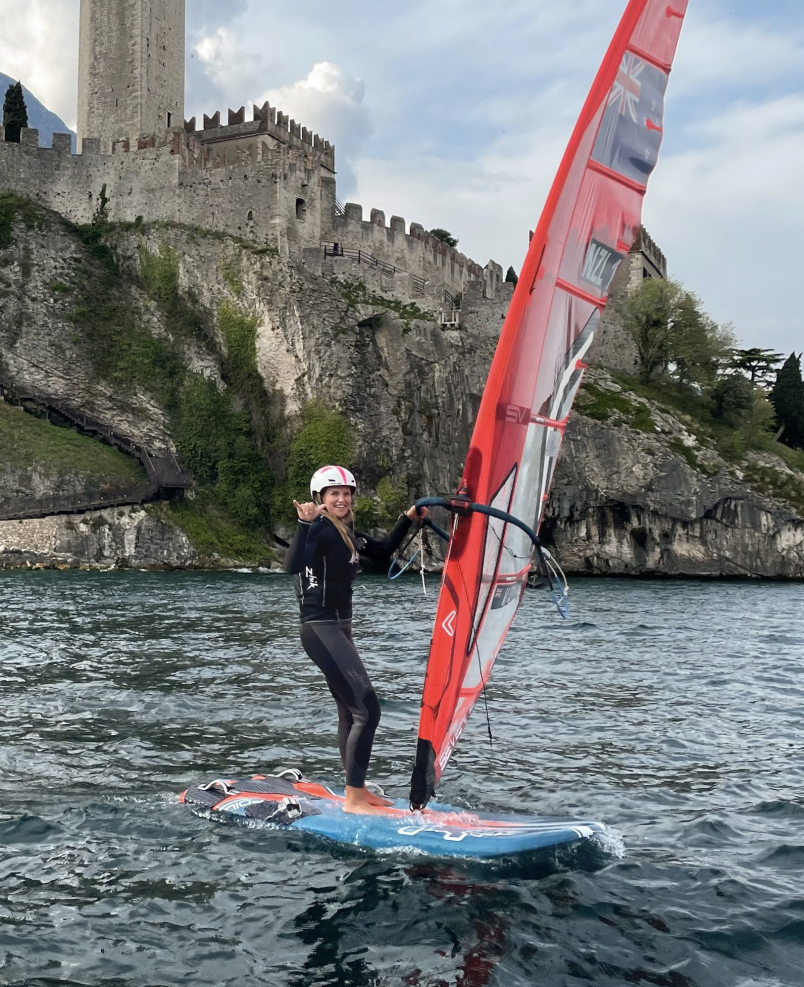
When she gets out on the water, however, the joy makes it more than worthwhile – often likened to flying rather than sailing, the sensation of speeding above the waves is like no other. “The cool thing is that you’re travelling at a high speed across the water and it’s completely silent. There’s no slapping of the board on the water or sails flapping next to you, sometimes a slight whistle from the foil through the water. But you’re looking down and going 40 kilometres an hour – no noise – which is so cool,” Veerle says. “And especially if you’re out and it’s maybe light winds, but you’re still foiling and travelling fast and you’re out there by yourself. It’s just... Wow.”
The water’s not always flat, so how do you navigate those bigger swells? “It’s a tiny little body movement. If you see a swell coming, you pull on your front foot a little to fly a bit higher, or you push down on your front foot a little bit to fly a bit lower, and you’re trying to just ride through the waves so that you’re consistently at the same level.”
I wonder what Veerle’s idea of the perfect environment would be. “Everyone enjoys something different, but for me it would be sunny, probably in the evening and maybe 10-12 knots, flat water or little waves and nice and hot. Those are great sporting conditions,” she says.
Veerle says her favourite locations in New Zealand are Auckland Harbour by Rangitoto, Browns Island, and all along the bays. “Because you have such varying conditions and there’s always other boats on the water that you can sail by. You’ve just got such a vast, wide ocean in front of you that you can just go wherever you like.”
International sailing must be exciting, though? Veerle shrugs, saying, “Out of everywhere in the world, New Zealand is still my favourite place to sail. I also really enjoyed Hyeres in France, and Texas. Probably because I did well there [in competitions]. It was really hot and windy every day, even though the water was a bit brown, which wasn’t very nice!”
Thus far, Veerle’s career has been an exciting ride. Having been quoted as saying she’s addicted to the sport, I ask what it is that keeps her invested. “The racing,” she says without hesitation. “The competitiveness about it – it’s an emotional rollercoaster; when you have a bad day, you’re really sad, and when you have a good day,
you’re really happy. Just being able to see getting closer to my goal with every competition keeps me driven.”
What is Veerle’s ultimate goal? “To be able to say that I'm the best in the world at what I do.”
In a career that already boasts so many highlights, I’m curious what would be among the most memorable. “Winning a youth medal in Texas for windsurfing,” Veerle says. “Also, when we made our debut windfoiling overseas – we’d just been training over here in New Zealand in isolation because of COVID-19. Everyone else had done some competitions, but we had no idea where we stood within the rest of the world. So we were fizzing to race with other people. By the second race of the first regatta, I came first, and that was a highlight. Over that whole regatta, I ended up being in the top 10, which fully exceeded our expectations. Even to see our hard work was really going in the right direction was exciting, as it was still a new sport.”
As with anything in life, there are always setbacks, and Veerle is her own harshest critic. “It’s always disappointing when you have high expectations and you don’t meet them. Especially when you’re racing, your world becomes really small and all you’re thinking about is that competition. Everything else – family, friends, study – become irrelevant. So if you don’t meet those expectations, it literally feels like the end of the world… I’ve had moments in a regatta when I wonder if I was training for nothing. But then you step out of the bubble and get perspective.”
